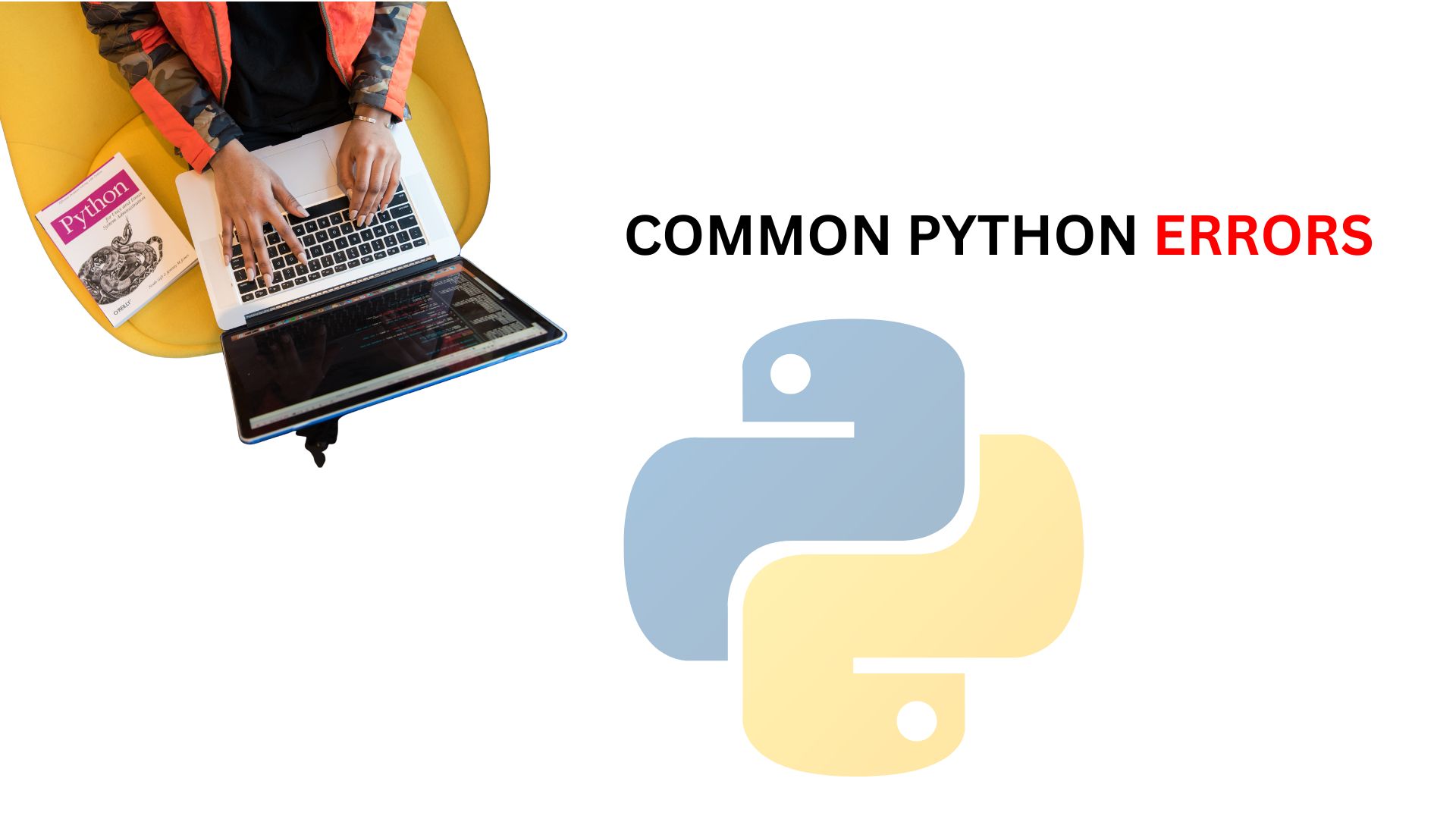Introduction
Top 5 Common Python Coding Errors and How to Fix Them: Python is widely regarded as one of the easiest programming languages to learn. Its clean syntax, readability, and large supportive community make it a favorite among beginners and professionals alike. It’s used in everything from web development and automation to data science and artificial intelligence.
But while Python might be beginner-friendly, it doesn’t mean you won’t run into challenges. As with learning any new language, writing Python code comes with its own set of common mistakes, especially when you’re just starting. The good news is: most of these mistakes are easy to identify and fix once you understand what’s causing them.
Whether you’re a student in one of our courses or learning Python on your own, being familiar with these frequent errors can save you hours of frustration. Learning how to read and understand Python coding error messages is one of the most valuable skills you can develop early on.
In this blog post, we’ll explore the Top 5 Most Common Python Errors that beginners encounter. We’ll explain why these Python coding errors happen, provide simple code examples, and show you the correct way to fix them. By the end of this post, you’ll be better equipped to write error-free Python code and more confident in your coding journey.
1. IndentationError

Python uses indentation (spaces or tabs) to define blocks of code. Unlike other languages that use curly braces {}, Python requires consistent indentation. If your code is not properly aligned, you’ll get an IndentationError.
Example:
def greet():
print(“Hello, World!”)
Error:
IndentationError: expected an indented block
Fixed Code:
def greet():
print(“Hello, World!”)
Tip: Always use 4 spaces per indentation level and be consistent. Avoid mixing tabs and spaces.
2. NameError
A NameError occurs when you try to use a variable or function that hasn’t been defined yet. This is usually a typo or a missing assignment.
Example:
print(username)
Error:
NameError: name ‘username’ is not defined
Fixed Code:
username = “Sajna”
print(username)
Tip: Check spelling and ensure that variables are defined before using them.
3. TypeError
This error happens when you try to operate on a value of the wrong type. For example, trying to add a string and an integer.
Example:
age = 25
message = “You are ” + age + ” years old”
Error:
TypeError: can only concatenate str (not “int”) to str
Fixed Code:
age = 25
message = “You are ” + str(age) + ” years old”
print(message)
Tip: Always be aware of the data types you’re working with. Use str(), int(), or float() to convert when needed.
4. SyntaxError
A SyntaxError means there is something wrong with the structure of your code, such as a missing colon, parenthesis, or quotation mark.
Example:
if x > 10
print(“x is greater than 10”)
Error:
SyntaxError: expected ‘:’
Fixed Code:
if x > 10:
print(“x is greater than 10”)
Tip: Carefully check your punctuation. A good code editor will help you identify these mistakes.
5. IndexError
An IndexError occurs when you try to access an item in a list using an index that doesn’t exist.
Example:
colors = [“red”, “green”, “blue”]
print(colors[3])
Error:
IndexError: list index out of range
Fixed Code:
colors = [“red”, “green”, “blue”]
print(colors[2])
Tip: Always check the length of your list using len() before accessing an index.
Final Thoughts
Making mistakes is part of the learning process. Every Python developer, beginner or expert, has encountered these errors. The key is not to fear them, but to understand what they mean and how to fix them.
Use this guide as a reference while practicing Python. And remember, reading error messages carefully is the first step toward fixing them. A good debugging habit will make you a better and more confident programmer.





